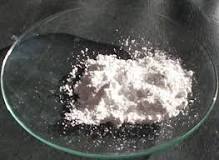Admin
Brief description of Pickling and Passivation using Weldbrite and S-Weld:
🔧 Pickling
- Purpose: Removes surface contaminants, oxide scales, and weld discoloration from stainless steel after welding or fabrication.
- Process: Uses acidic chemicals (typically nitric and hydrofluoric acids) to clean and etch the metal surface.
- Product:
- Weldbrite: A pickling gel designed to treat stainless steel welds, removing heat tint and restoring the original finish.
🌫️ Passivation
- Purpose: Enhances corrosion resistance by forming a protective chromium-rich oxide layer on the stainless steel surface.
- Process: After pickling, the surface is treated with a nitric acid-based passivation solution, which promotes the formation of a passive layer.
- Product:
- S-Weld Passivator: Used to re-passivate stainless steel after pickling, ensuring long-term corrosion protection.
Density-Functional Theory (DFT)
A successful theory for calculating the electrical structure of atoms, molecules, and solids is density-functional theory (DFT). Its objective is to use the fundamental laws of quantum mechanics to quantitatively comprehend the properties of materials.
When combined with non-equilibrium Green’s functions, density functional theory (DFT) is a quantum-mechanical atomistic simulation technique that can calculate a wide range of properties of almost any type of atomic system, including those of molecules, and crystals, surfaces, and even electronic devices.
DFT is a member of the first principles (ab initio) approach family, so termed for their ability to predict material properties for unidentified systems without the use of experiments. DFT has become well-known among these due to the minimal computational effort needed.
The DFT technique is frequently used in the fields of organic and inorganic chemistry, materials science (such as ceramics or metallurgy), drug production, and electronic materials.
Most widely used pigment in paint manufacturing industry – Titanium Oxide (TiO2)
Titanium dioxide, also called titania, (TiO2), a white, opaque, naturally occurring mineral existing in a number of crystalline forms, the most important of which are Rutile and Anatase. Anatase TiO2 changes to Rulite above 800 °C.
Titanium dioxide pigment is a fine white powder. When used in paints, it provides for maximum whiteness and opacity. … It does this more effectively than any other white pigment. Today, Titanium dioxide pigment is by far the most important material used by the paints manufacturing industry for whiteness and opacity.
These naturally occurring oxide forms can be mined and serve as a source for commercial titanium. Titanium dioxide is odourless and absorbent. Its most important function in powder form is as a widely used pigment for lending whiteness and opacity.

Titanium Oxide
Hydrogen-Induced Cracking (HIC)
🔹 What is HIC?
Hydrogen-Induced Cracking is a type of internal cracking that occurs in metals, especially carbon steel, due to the absorption and accumulation of atomic hydrogen.
🔹 How It Happens:
-
Hydrogen atoms enter the metal (e.g., during corrosion in sour service environments containing H₂S).
-
Hydrogen atoms diffuse into the steel and accumulate at trap sites like inclusions or laminations.
-
This leads to the formation of internal pressure from molecular hydrogen (H₂), which creates micro-cracks.
-
Cracks typically form parallel to the rolling direction of the steel.
🔹 Key Characteristics:
-
Cracks are blister-like or stepwise.
-
Occurs below the surface, not on external welds.
-
Common in wet H₂S environments (e.g., pipelines, pressure vessels).
-
No external stress is needed — it can occur even without applied load.
🔹 Commonly Affected Materials:
-
Carbon and low-alloy steels, especially with high sulfur content or non-metallic inclusions.
🔹 Prevention Methods:
-
Use HIC-resistant materials (e.g., low-sulfur steels, vacuum-degassed steel).
-
Apply inhibitors in corrosive environments.
-
Use cladding or coating (e.g., stainless steel overlays).
-
Conduct NACE TM0284 testing to assess HIC susceptibility.
🔹 Testing & Detection:
-
Ultrasonic Testing (UT).
-
Metallography on test samples.
-
Hydrogen permeation tests.
-
NACE standards guide testing protocols.